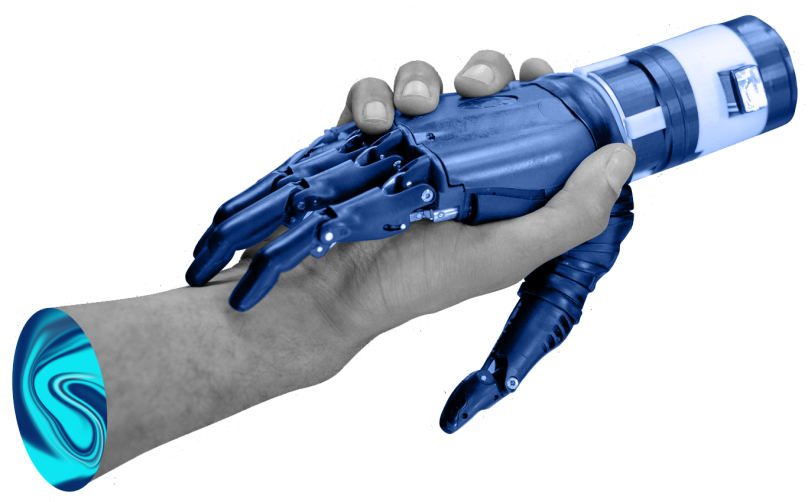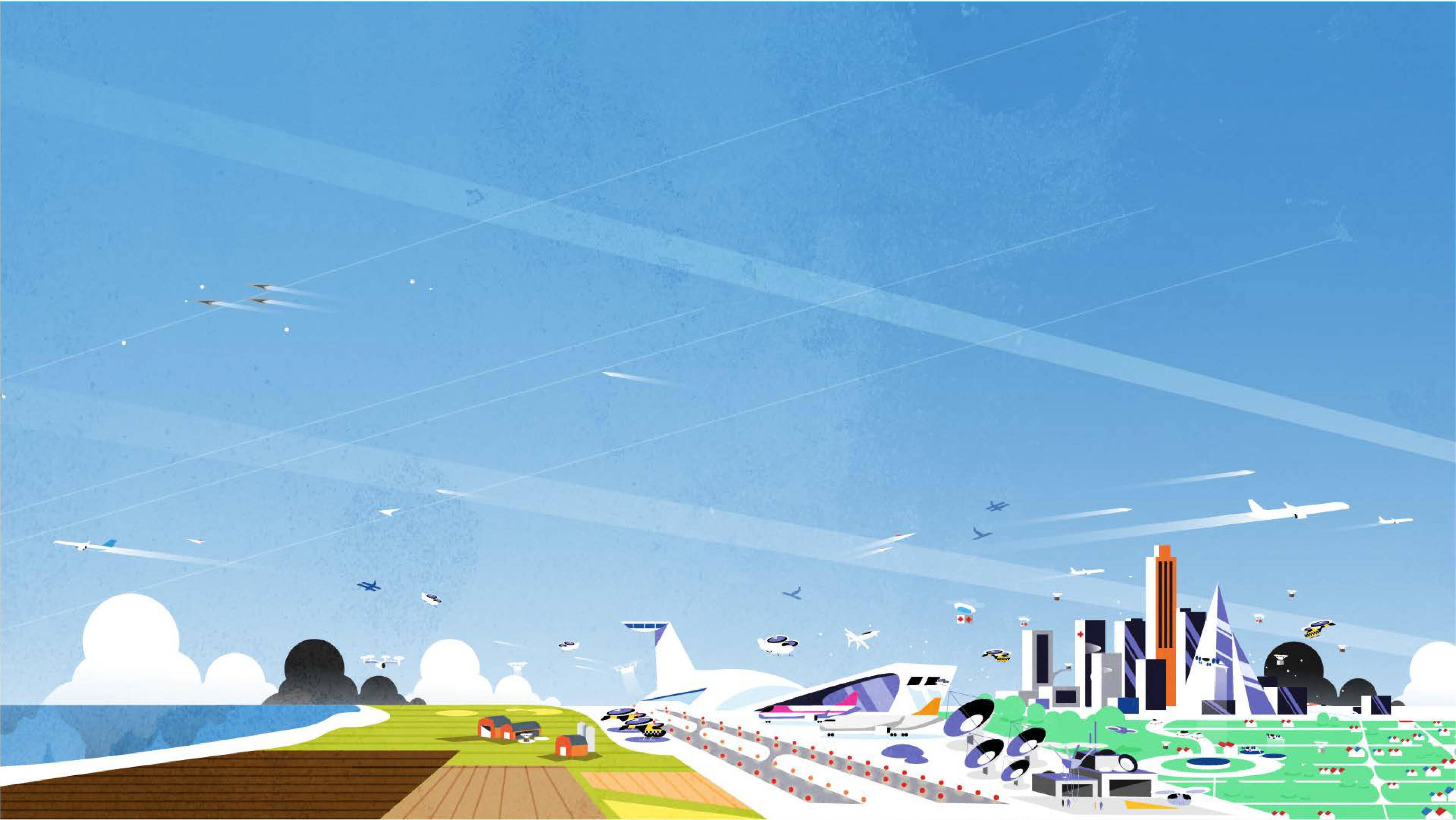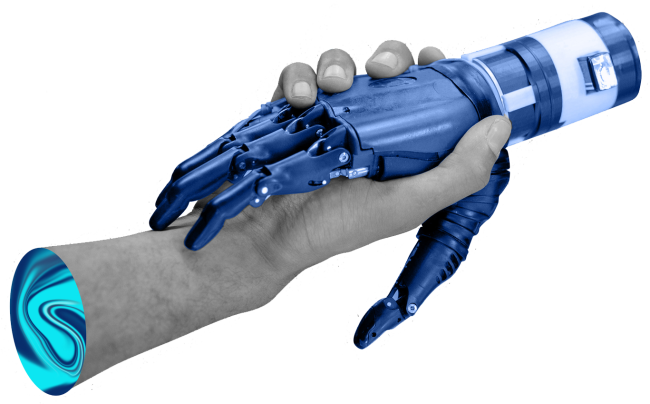

Safety
Vice-President and Chief Safety Officer, NAV CANADA and Chair, CANSO Safety Standing Committee Steering Group (SSC-SG)
Anthony McKay examines the future safety landscape.



Anthony Mackay, Vice-President and Chief Safety Officer, NAV CANADA and Chair, CANSO Safety Standing Committee Steering Group (SSC-SG)

Traditional aircraft groups have typically segregated themselves along the lines of the services air navigation service providers (ANSPs) provide by the class of airspace. Low-level helicopters and small general aviation aircraft flying at nearly the same speeds will now have to share that airspace with light unmanned aerial vehicles (UAVs). Class A and B airspace in the mid to high levels, with current jets all flying at ~m.77 to ~m.85, will be sharing that space with supersonic and hyper-sonic aircraft either passing through to higher altitudes or mixing in to cruise at the same levels.
We will need to plan trajectories to provide anticipated separation along the entire flight path instead of current tactical separation with legacy separation standards. We must prove that we can do all this well, 100% of the time. Together, they will challenge current airspace structure and procedure concepts and drive the adoption of new air traffic management (ATM) and remote tower module (RTM) platforms so we can safely unleash their benefits for society.
A. Despite operating one of the safest air navigation services in the world, continuous safety improvement is always a priority, and we’re working to answer some pretty big questions on the horizon.
How do we safely integrate new aircraft types into the aviation system? And into the same airspace at the same time? It’s a multifaceted question when you consider the range of performance characteristics across emerging technology aircraft – whether it's remotely piloted aircraft systems (RPAS), larger unmanned aerial mobility (UAM), supersonics and so forth.



A. This may sound counter-intuitive, but NAV CANADA is taking a human-centric approach to AI. In this context, the potential presented by AI is very significant across a range of activities and decision-support tools. Our approach is cautious as we consider AI, machine learning (ML) and related capabilities being developed.
In doing so, we need to consider how we can enhance or refocus the work of highly trained and skilled air traffic services professionals to ensure they have the best information and conflict detection at their fingertips.
We believe that AI and machine learning in ground-based systems will assist to a point. Especially in planning and delivering those conflict-free trajectories for aircraft. We can’t forget the aircraft side of the equation and what we can build into the avionics to ensure safety. Automatic Dependent Surveillance Broadcast (ADSB)-IN is a good start. Still, the next steps would be to provide the aircraft (crewed or un-crewed) with tactical traffic avoidance coordinated with the ANSP ground system.
Embracing technological transformations in the workplace necessitates a perspective and skill set shift. It is crucial to foster adaptability, digital literacy and innovation as automation and AI transform the aviation industry. Future workers must possess a blend of technical expertise and soft skills to traverse altering environments and fill the gaps created by automation.



A. The role of regulators will be critical. We need the proper regulations to ensure that new capabilities and operating concepts are reflected. More than that, we need a level of agility that has not been seen before. Regulators will need to be proactive and responsive to ensure that legacy regulatory frameworks do not roadblock the industry’s investments in making a better transportation system, and, at the same time, regulators need to rethink their capacity to manage and enable change while maintaining their core safety oversight responsibilities.
In terms of the regulation itself, it has to allow for more rapid system development and simulation for testing. The correct Monte Carlo simulations (mathematical simulations) enhanced with AI/ML could tell us a lot as we move forward, supporting a deeper and broader understanding of operating scenarios – and much faster than previously possible.
To evolve and achieve safety benefits, the air and ground systems must be considered jointly. Much of our design and regulation is still rooted in the aircraft design, performance and operations of the 1940s. We must move past that.



With emerging topics, we are also seeing new levels of complexity where trade-offs can exist within the same category. For instance, on the environmental front, there may be a trade-off between the warming effect of contrails and emissions from taking a longer route.
In safety, we have to look at the impacts of our choices downstream. Increasing controlled airspace, which brings the safety associated with positive control, can generate compression for operators looking to stay in uncontrolled airspace.
That said, there are interdependencies; the most efficient and emissions-reducing operation might not, by default, be the quietest. So, these interdependencies need to be considered as a whole, and at times, decisions that disfavour efficiency and environmental benefits may be required to sustain safety.
Aviation operations – whether ANSPs, aircraft operators or airports – need a certain amount of flexibility. A lot of things come together for a perfect, or even a good flight, and being not perfect should be okay as long as our operation is safe. This ensures that everyone can do their jobs within a set of standards or criteria. It’s a dynamic sector, and even though there is a drive towards consistency, it will remain a dynamic sector with humans in the centre.

A. The simple answer – yes and yes. Safety, sustainability and efficiency can fit together. Technology and data will make that possible, supporting data-driven performance monitoring and decision making. A prime example will be Trajectory-Based Operations (TBO) – which will bring a much more integrated gate-to-gate flight planning and operations environment. This predictability will reduce delays and support efficient routing and the use of noise-reducing procedures, with positive fuel consumption and emissions outcomes.

Anthony Mackay, Vice-President and Chief Safety Officer, NAV CANADA and Chair, CANSO Safety Standing Committee Steering Group (SSC-SG)

A. Make sure all industry participants are moving ahead on the same projects and the same integration at the same time. The Complete Air Traffic System, (CATS) Global Council blueprint, The CATS Global Vision, is a great starting point.


Close



Anthony McKay examines the future safety landscape.
Vice-President and Chief Safety Officer, NAV CANADA and Chair, CANSO Safety Standing Committee Steering Group (SSC-SG)
Safety




A. Despite operating one of the safest air navigation services in the world, continuous safety improvement is always a priority, and we’re working to answer some pretty big questions on the horizon.
How do we safely integrate new aircraft types into the aviation system? And into the same airspace at the same time? It’s a multifaceted question when you consider the range of performance characteristics across emerging technology aircraft – whether it's remotely piloted aircraft systems (RPAS), larger unmanned aerial mobility (UAM), supersonics and so forth.
Anthony Mackay, Vice-President and Chief Safety Officer, NAV CANADA and Chair, CANSO Safety Standing Committee Steering Group (SSC-SG)

Traditional aircraft groups have typically segregated themselves along the lines of the services air navigation service providers (ANSPs) provide by the class of airspace. Low-level helicopters and small general aviation aircraft flying at nearly the same speeds will now have to share that airspace with light unmanned aerial vehicles (UAVs). Class A and B airspace in the mid to high levels, with current jets all flying at ~m.77 to ~m.85, will be sharing that space with supersonic and hyper-sonic aircraft either passing through to higher altitudes or mixing in to cruise at the same levels.
We will need to plan trajectories to provide anticipated separation along the entire flight path instead of current tactical separation with legacy separation standards. We must prove that we can do all this well, 100% of the time. Together, they will challenge current airspace structure and procedure concepts and drive the adoption of new air traffic management (ATM) and remote tower module (RTM) platforms so we can safely unleash their benefits for society.




We believe that AI and machine learning in ground-based systems will assist to a point. Especially in planning and delivering those conflict-free trajectories for aircraft. We can’t forget the aircraft side of the equation and what we can build into the avionics to ensure safety. Automatic Dependent Surveillance Broadcast (ADSB)-IN is a good start. Still, the next steps would be to provide the aircraft (crewed or un-crewed) with tactical traffic avoidance coordinated with the ANSP ground system.
Embracing technological transformations in the workplace necessitates a perspective and skill set shift. It is crucial to foster adaptability, digital literacy and innovation as automation and AI transform the aviation industry. Future workers must possess a blend of technical expertise and soft skills to traverse altering environments and fill the gaps created by automation.
A. This may sound counter-intuitive, but NAV CANADA is taking a human-centric approach to AI. In this context, the potential presented by AI is very significant across a range of activities and decision-support tools. Our approach is cautious as we consider AI, machine learning (ML) and related capabilities being developed.
In doing so, we need to consider how we can enhance or refocus the work of highly trained and skilled air traffic services professionals to ensure they have the best information and conflict detection at their fingertips.



In terms of the regulation itself, it has to allow for more rapid system development and simulation for testing. The correct Monte Carlo simulations (mathematical simulations) enhanced with AI/ML could tell us a lot as we move forward, supporting a deeper and broader understanding of operating scenarios – and much faster than previously possible.
To evolve and achieve safety benefits, the air and ground systems must be considered jointly. Much of our design and regulation is still rooted in the aircraft design, performance and operations of the 1940s. We must move past that.
A. The role of regulators will be critical. We need the proper regulations to ensure that new capabilities and operating concepts are reflected. More than that, we need a level of agility that has not been seen before. Regulators will need to be proactive and responsive to ensure that legacy regulatory frameworks do not roadblock the industry’s investments in making a better transportation system, and, at the same time, regulators need to rethink their capacity to manage and enable change while maintaining their core safety oversight responsibilities.


With emerging topics, we are also seeing new levels of complexity where trade-offs can exist within the same category. For instance, on the environmental front, there may be a trade-off between the warming effect of contrails and emissions from taking a longer route.
In safety, we have to look at the impacts of our choices downstream. Increasing controlled airspace, which brings the safety associated with positive control, can generate compression for operators looking to stay in uncontrolled airspace.
That said, there are interdependencies; the most efficient and emissions-reducing operation might not, by default, be the quietest. So, these interdependencies need to be considered as a whole, and at times, decisions that disfavour efficiency and environmental benefits may be required to sustain safety.
Aviation operations – whether ANSPs, aircraft operators or airports – need a certain amount of flexibility. A lot of things come together for a perfect, or even a good flight, and being not perfect should be okay as long as our operation is safe. This ensures that everyone can do their jobs within a set of standards or criteria. It’s a dynamic sector, and even though there is a drive towards consistency, it will remain a dynamic sector with humans in the centre.
A. The simple answer – yes and yes. Safety, sustainability and efficiency can fit together. Technology and data will make that possible, supporting data-driven performance monitoring and decision making. A prime example will be Trajectory-Based Operations (TBO) – which will bring a much more integrated gate-to-gate flight planning and operations environment. This predictability will reduce delays and support efficient routing and the use of noise-reducing procedures, with positive fuel consumption and emissions outcomes.



Anthony Mackay, Vice-President and Chief Safety Officer, NAV CANADA and Chair, CANSO Safety Standing Committee Steering Group (SSC-SG)
A. Make sure all industry participants are moving ahead on the same projects and the same integration at the same time. The Complete Air Traffic System, (CATS) Global Council blueprint, The CATS Global Vision, is a great starting point.


